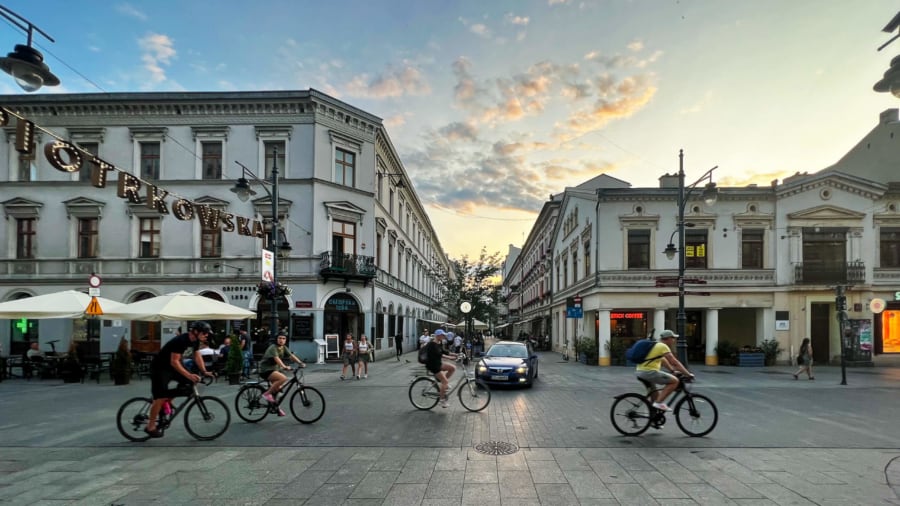The idea to write about the regeneration of the city centre of Łódź came to me for two reasons:
1. I lived and worked in Łódź for 18 months (January 2012-June 2013). This city is certainly close to my heart.
2. My student – Mr Łukasz Waszczykowski – specialises in construction law and has extensive knowledge of the real estate market. He knows Łódź like the back of his hand.
Therefore, I asked Mr Waszczykowski to give a short interview for Finding Poland on the topic of the revitalisation programme in the city centre of Łódź.
Firstly, I will briefly introduce the main topic of this post – the regeneration of the city centre of Łódz – and consider the programme of revitalisation within the context of the history of the city.
Then, I will introduce Mr Waszczykowski and present his views regarding the regeneration of the city centre of Łódź.
Finally, I will present some images of the regeneration of tenement buildings and green spaces. Mr Marek Królikowski – a professional photographer from Łódź – agreed to shoot some pictures for the purposes of this post. Moreover, I will share some other pictures of selected buildings which have been renovated. These pictures are on Portal Rewitalizacja (Revitalisation Portal). This is a website run by Łódź City Hall.
The Regeneration of the City Centre of Łódź in its Historical Context
Private capital is working hand in hand with EU funding and local authority spending to revitalise the city centre of Łódź.
Quite simply, investors have tremendous faith in the business potential of the city. The office market in Łódź is unique and investors appreciate this. Companies are able to choose from a wide portfolio of projects, whether they are intriguingly adapted post-industrial environments which provide a unique working environment, or ultra-modern office schemes.
Łódź in the First Half of the 19th Century
To fully appreciate the major transformation Łódź has been going through, we need to focus on the city’s industrial heritage. In the first half of the 19th century, Łódź began its transformation from a small settlement to a mighty industrial centre.
First of all, let’s go back to 1815. As a consequence of the 1815 Congress of Vienna, the Napoleonic Duchy of Warsaw was dissolved. As a result, Łódź became a part of the Congress Kingdom of Poland which was in the Russian partition. This was hardly cheerful news for the local Poles. However, it was an economic game-changer.
In 1820, Rajmund Rembieliński, the chairman of the Masovian Voivodeship Commission, visited the town of Łódź. Interested in urban and economic expansion, Rembieliński highlighted Łódź’s favourable conditions for the development of the textile industry. Almost a year later, Łódź received the status of a so-called “industrial city”. To the south of the Old Town, a new settlement was drawn. This became the seed of industrial Łódź.
Łódź continued its southward expansion when the Łódka settlement was established. Along the Jasień River, at the site of former mill dikes, the industrial zone was created.
In the Księży Młyn area, the first big (water-wheel driven) factory in Łódź was built in 1827. This was the spinning mill of Krystian Wendisch.
Łódź in the Second Half of the 19th Century
Another notable development in 19th-century Łódź occurred in 1855. Close to the city’s first park – Zródliska – a factory was erected. It was built by Karol Scheibler, who had just arrived in the city. Certainly, this wasn’t just any old factory. Scheibler’s factory actually gave rise to factories built with brick, a distinctive feature of Łódź.
In the 1850s and 1860s, more and more multi-storey tenement houses appeared in Łódź. The seeds were gradually being sown for the golden era in the development of the city – the last 30 years of the 19th century. It was during that period that new factories belonging to the city’s industrialists were built. These factory complexes include Karol Scheibler’s Księży Młyn and that which belonged to Izrael Poznański on Ogrodowa Street.
In the 1880s and 1890s, the centre of Łódź began to acquire more typical “big city” characteristics. More and more old houses were replaced with new municipal tenement houses. The rapid increase in the number of buildings was largely down to the City Credit Union (Towarzystwo Kredytowe Miejskie) which Łódź manufacturers founded to grant loans for construction purposes.
3800 town houses, 27 palaces, 200 factories and dozens of villas are visible traces of the extraordinary heritage which remains all these years after the boom of the industrial city of Łódź.
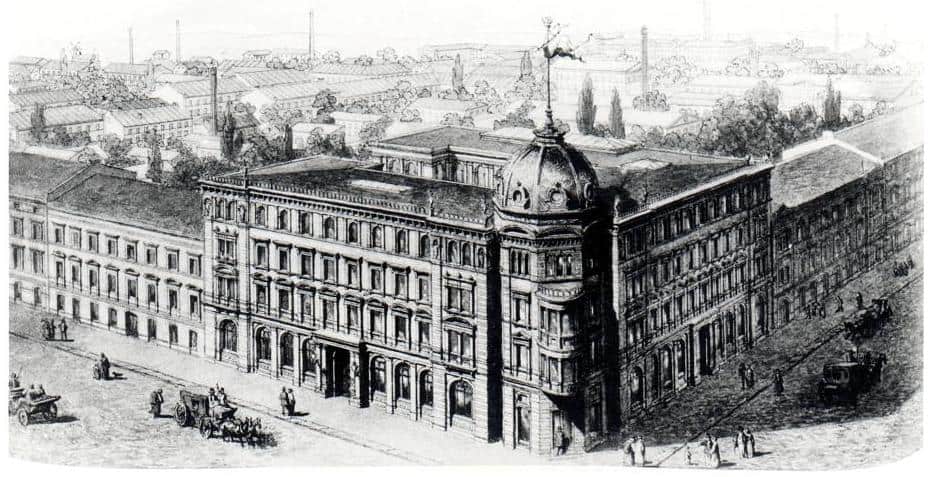
A Conversation with Mr Łukasz Waszczykowski
Mr Łukasz Waszczykowski is a lawyer by profession. Among many other fields, he specialises in real estate economics, construction law and spatial planning.

I caught up with Mr Waszczykowski on Skype to talk about the revitalisation of real estate and tenement buildings in Łódź. Here’s what he had to say about the matter:
1. I’d like to begin by talking about the regeneration schemes for dilapidated residential tenement buildings and the revitalisation of notorious streets, such as Włókiennicza. Can you share some background information and your impressions of this particular strand of urban renewal in Łódź on the part of the local government?
“Łódź had always carried this tag of being a depressing looking city due to the many run-down and abandoned buildings. Now, when you visit the city, the beauty of its buildings is more eye-catching than before. Think nineteenth and early twentieth century architecture in the Art Nouveau style. This is actually rather unique in Poland. Other styles, such as Medieval, Roman and Renaissance, tend to dominate the city centres of other Polish cities.
Łódź has benefitted from rapid development over the last 20 years. One of the biggest changes is in the revitalisation of historic buildings – those from the late nineteenth or early twentieth centuries. Furthermore, it’s plain to see the development of infrastructure in terms of newer buildings – both residential and those for business purposes – offices or retail spaces.
There’s been a great deal of input from both private and public sector investors. Since the start of this century, Łódź has welcomed many private investors from overseas, as well as domestic ones.
After some time, the local government decided to be a significant participant in the revitalisation of the city. What had always been very characteristic of Łódź was the fact that the local government owned the majority of buildings in the city centre. This was due to historical reasons. After the Second World War, communist rule came to Poland. Therefore, local governments assumed control of the majority of properties in Poland, particularly in Łódź. Actually, the local government still owns plenty of buildings in the city centre today.
For many years, both during communism and after the fall of communism, the condition and technical status of the buildings was neglected by the local government due to a constant lack of funds. As the economic situation improved in Poland, and the local government benefited from increased revenue, it decided to start the renovation process of the city centre.
Regarding real estate development projects which involve private investors, Łódź is booming. Indeed, it’s the same case in many other Polish cities.
2. Did the citizens of Łódź initially welcome the programme of urban revitalisation?
“At first, the programme of urban renewal in Łódź wasn’t so warmly welcomed by the citizens of Łódź. However, as time passed, people realised that it’s beneficial both for them as tenants and inhabitants of the city centre, and also the city in general due to improved urban aesthetics and appeal to tourists and business investors.
3. What’s been particularly unique about the revitalisation of the city centre of Łódź?
“In contrast to other big cities in Europe, as well as in Poland, the plots of land in the city centre of Łódź are still owned by the local authorities. Normally, of course, apartments in the city centre are the most expensive and attractive ones. However, it’s traditionally been the reverse situation in Łódź because people with lower incomes have tended to live in the city centre.
I’d also like to mention modern architectural tendencies to include the implementation of special green areas in new investments – both around buildings or even on top of buildings. Through such developments, you can really see that Łódź will be a much greener city in the future. Nevertheless, I still contest that Łódź has a fair share of green space today in the form of parks and forests.
Pictures of the Regeneration of the City Centre of Łódź
You’ve read about the programme of regeneration in Łódź within the context of the history of the city. Now, I’d like to share some pictures of selected projects which illuminate the extent to which Łódź’s spatial development has completely changed. Specifically, greater emphasis is placed on pedestrian traffic and green spaces through the introduction of woonerfs and pocket parks into the public space. Of course, I will also present some tenement buildings which have been renewed.
1. Włókiennicza Street
The face of Łódź’s (previously) most notorious street has already undergone a substantial transformation.
Before I get to the changes, here are some images of the area from 2011. Frankly, it seems like many decades ago now:
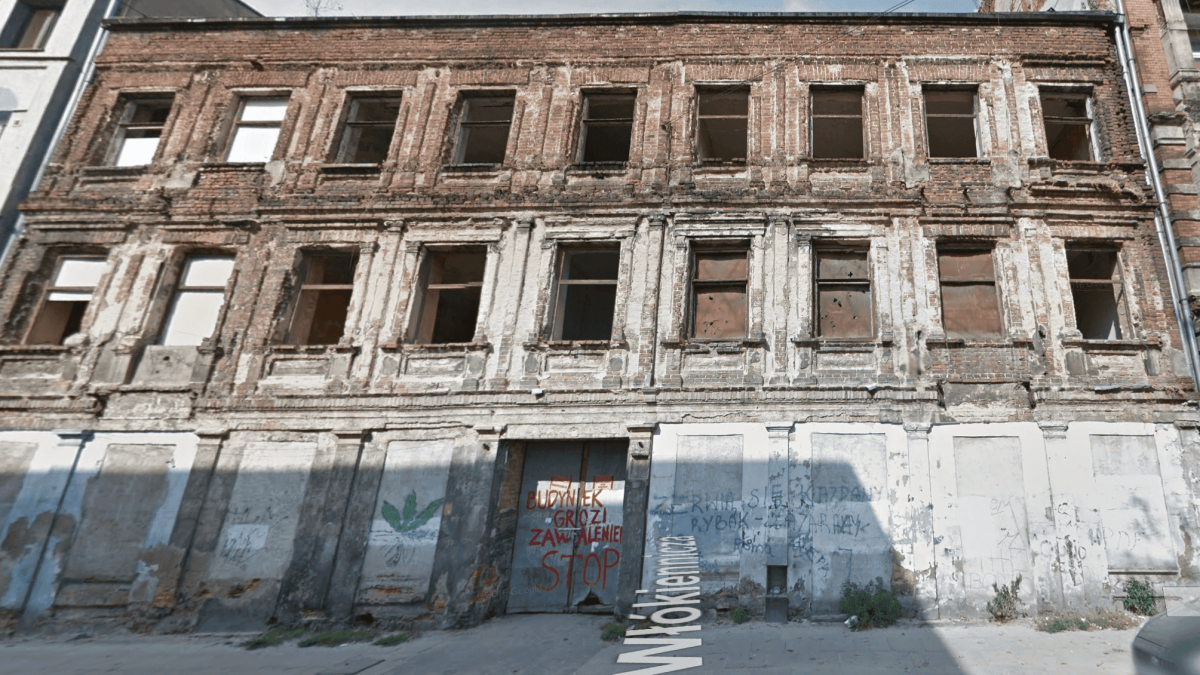
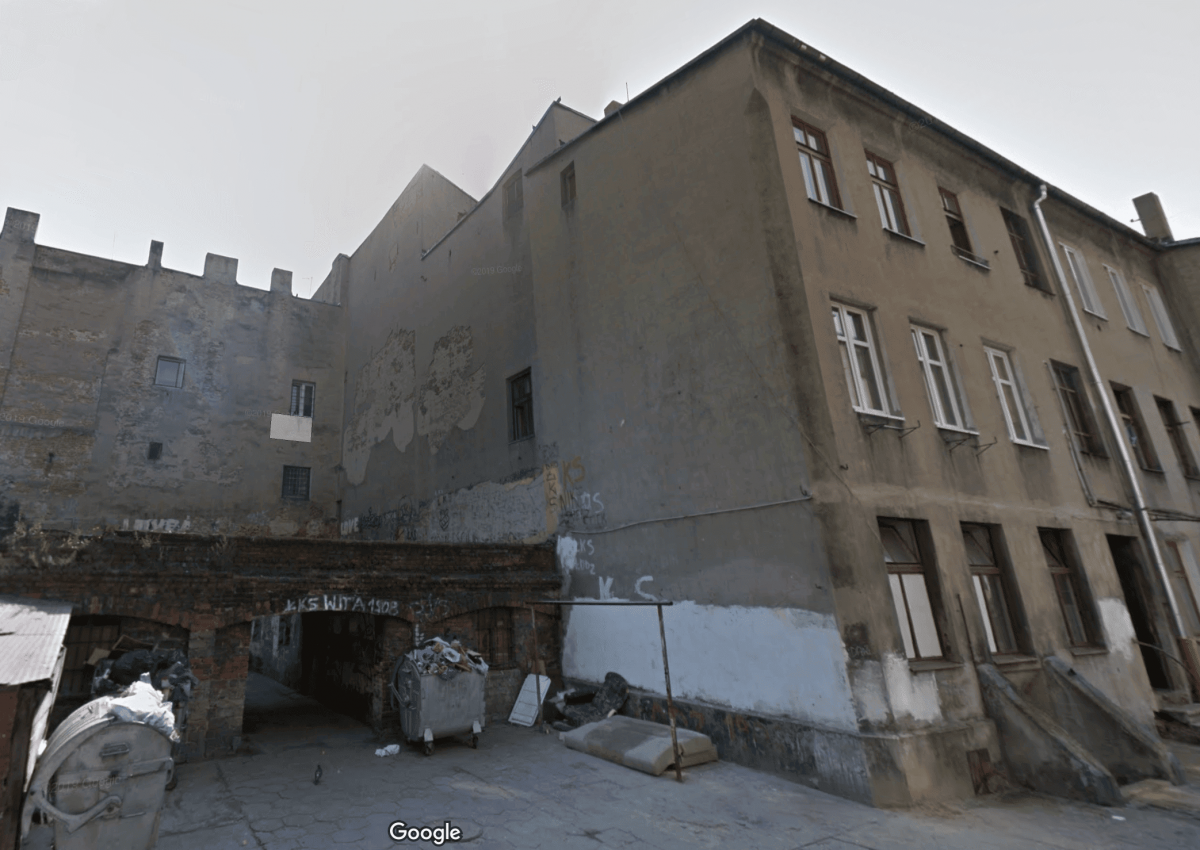
Most of the tenement houses on Włókiennicza have been subject to revitalisation. Artistic forms have been added to their facades. Between Jaracza and Włókiennicza Streets, a new passage with a fountain has been created. The passage owes its new name to Hilary Majewski, city architect of the city of Łódź between 1872-1892, whose tenement house stands right next to it.
Plenty of greenery is now visible – trees, vines, flower beds, shrubs and lawns have appeared in the courtyards and streets. Moreover, there are now plenty of benches on Włókiennicza Street.
It’s fair to say that Włókiennicza has changed, and will continue to change, for the better:
Włókiennicza 6

Włókiennicza 11
Check out before and after images of the tenement building at Włókiennicza 11. The renovation of the building was completed in December 2022. Flats are now connected to central heating and the building has gained access to fibre-optic communication.

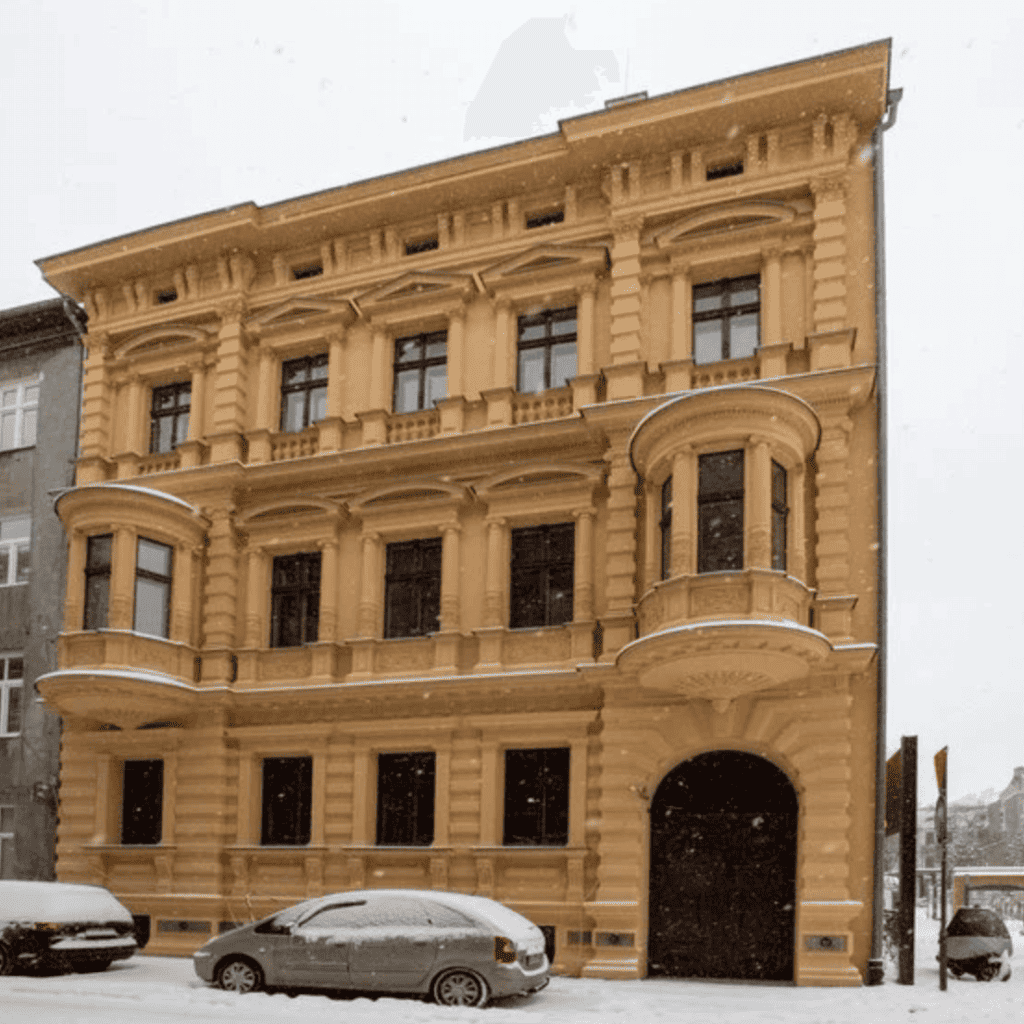
2. Tuwima Street
Ulica Juliana Tuwima is another street that’s reaping the rewards from the programme of regeneration of the city centre of Łódź:
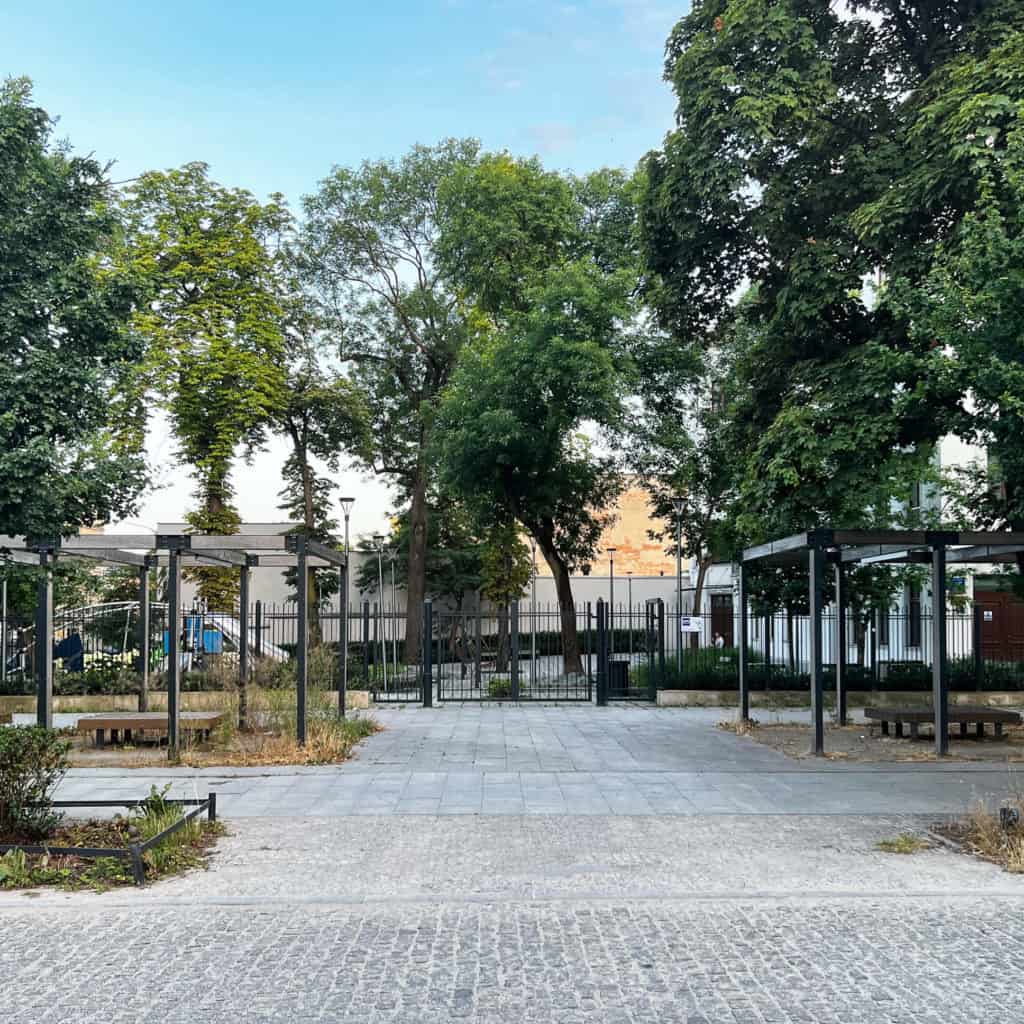
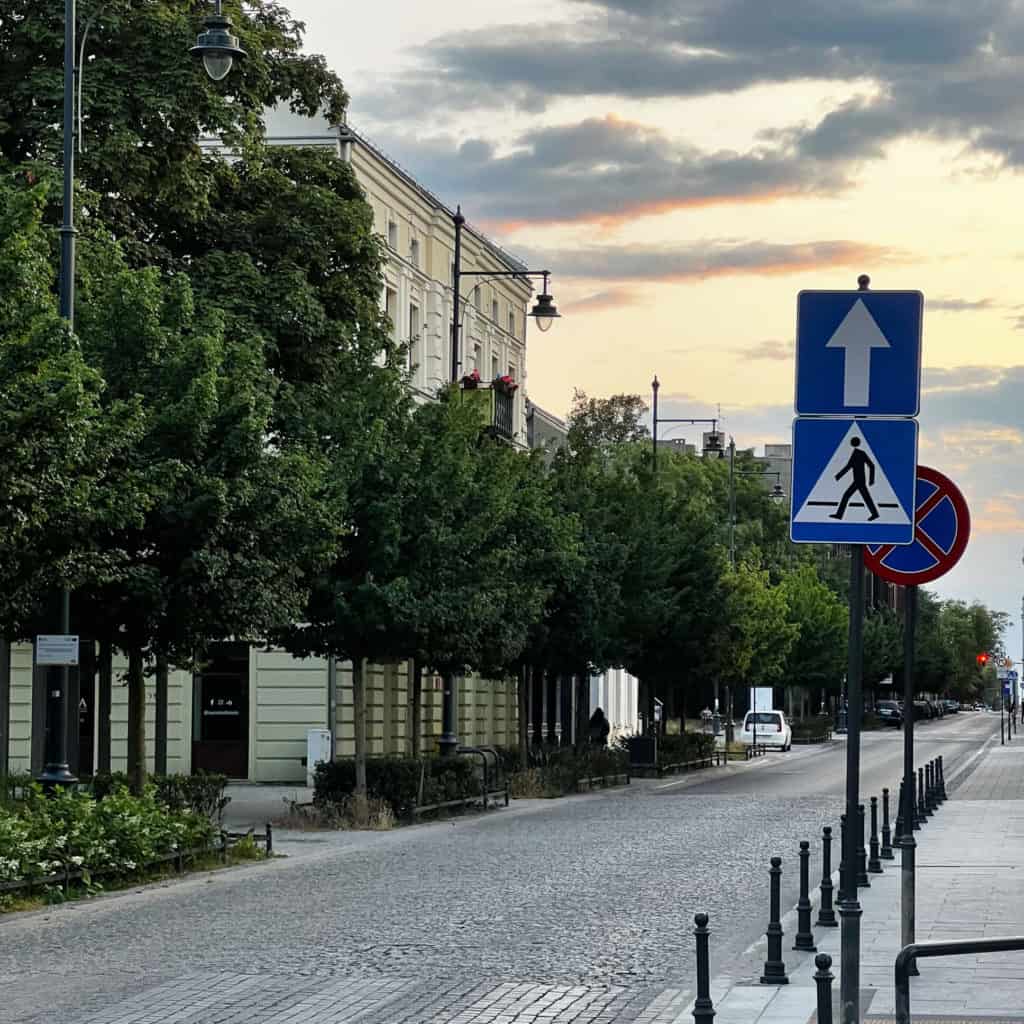
Tuwima 46
The residential tenement building at ul. Tuwima 46 (see the before and after pictures below) changed its function to an office and service building. After the renovation, the main part of the building was occupied by the offices of the EC1 Łódź City of Culture institution. A public library and three commercial premises on the ground floor were also built on the ground floor.
The building was extended with two new parts: the northern and western outbuildings. Moreover, the attic of the front building and the existing eastern outbuilding were extended. Central heating has been fitted. Outside the building, a public courtyard was arranged, where six trees were planted. In the newly-built part, an external terrace belonging to the library was created. This now serves a recreational function.
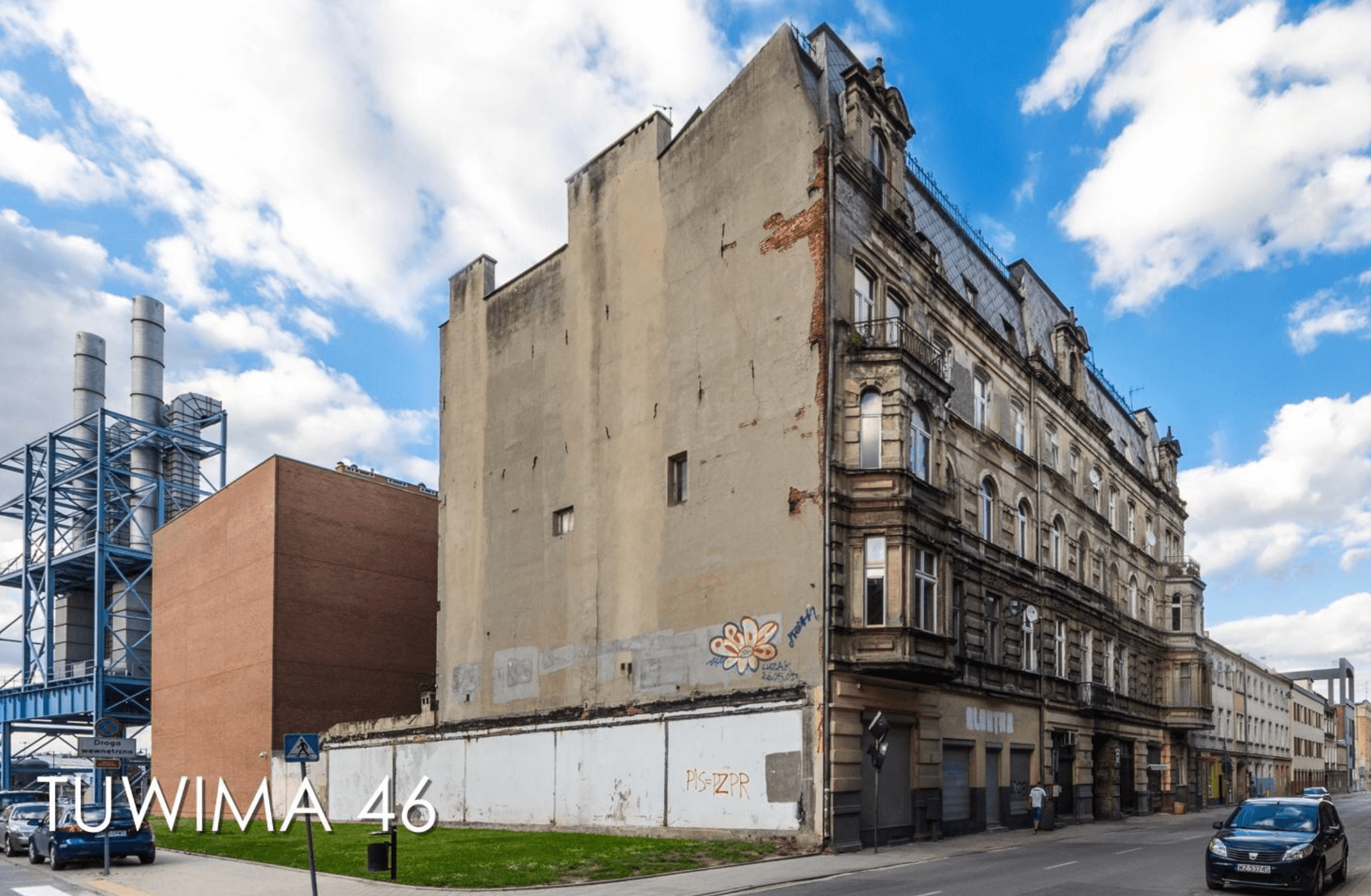
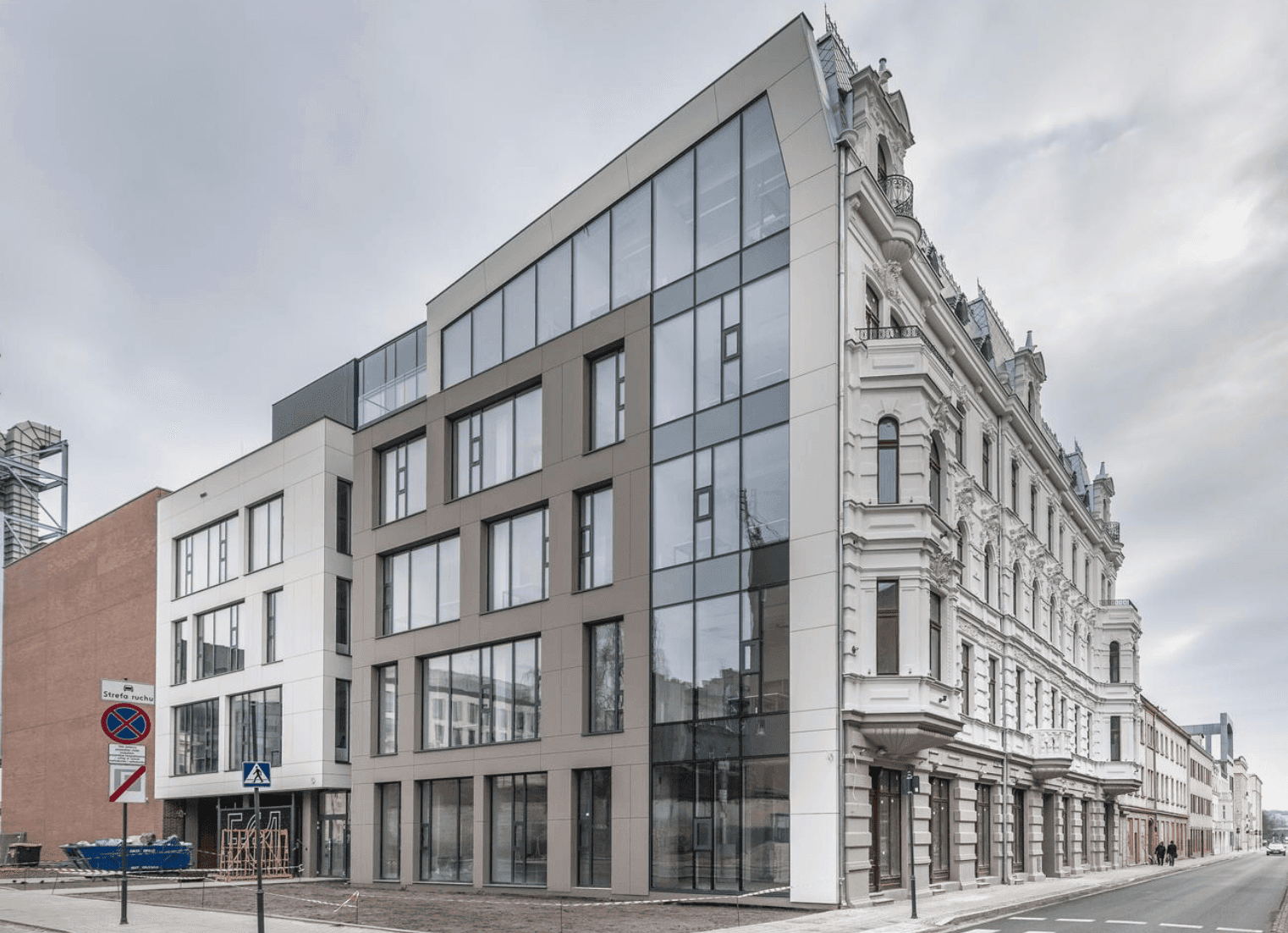
3. Kilińskiego Street 26
Honestly, I have a bit of a soft spot for Kilińskiego Street because I lived there for a few months back in 2012. The tenement building at Kilińskiego Street 26 is practically opposite the block I lived in. Additionally, Kiłinskiego 26 is only around 50 metres away from the aforementioned Włókiennicza Street.
Here are the before (building on the left) and after pictures:
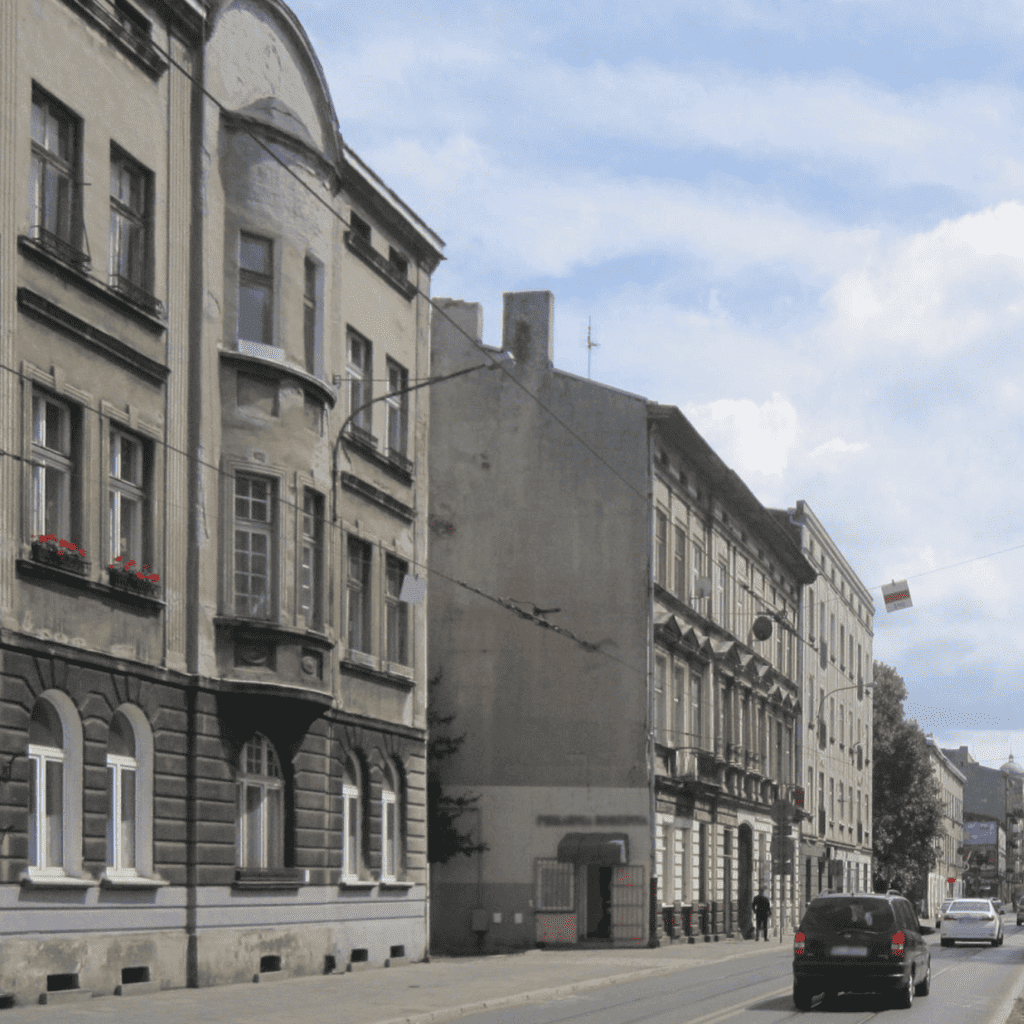
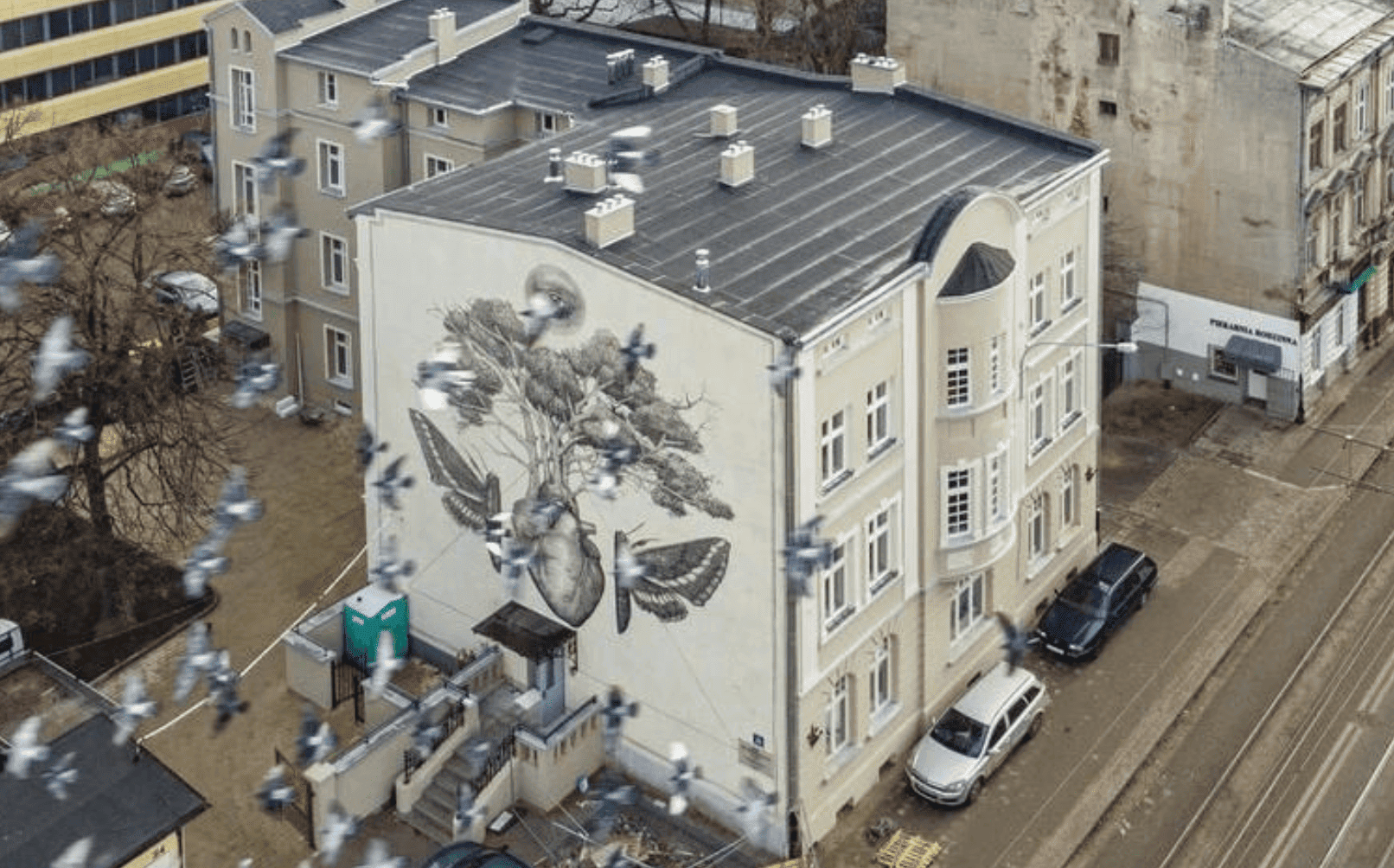
Concluding thoughts
The Industrial Revolution in the 19th century stimulated Łódź’s initial rapid development. It’s now post-industrial urban redevelopment that is making the city a buzzing and dynamic destination once again.
It will be interesting to revisit this post or write another post when all of the work has been completed. In particular, I will be intrigued to see the transformation of the Old Market Square (Stary Rynek) as well as Freedom Square (Plac Wolności), which is the gateway to the main pedestrianised street in Łódź – Piotrkowska.
The citizens of Łódź have deserved this programme of revitalisation. Let’s hope all this revitalisation attracts more people to move to the city as Łódź has suffered from depopulation in recent years.

